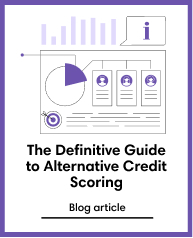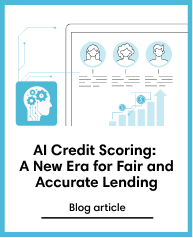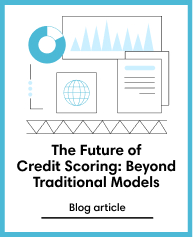Credit Scoring
Mar 13, 2018
Credit Scoring with Big Data
Subscribe to our newsletter
Full story on The Edge Markets.
CredoLab's co-founder and CEO Peter Barcak featured in a cover story by The Edge on big data scoring. Below is an excerpt:
CredoLab also creates a distinctive scorecard model for each lender. When it strikes up a partnership, it embarks on a data collection phase for at least three months where they collect data from borrowers as well as their repayment behaviour. During this period, the lender disburses loans as usual without input from CredoLab. The borrowers are asked to download the app with credolab SDK in it to enable access to data.
“After two or three months, we will have a sufficient number of records. Then, by correlating the digital footprint from mobile devices and performance data from that particular lender, we are able to develop a scorecard,” says Barcak.
“From the moment we put that scorecard into production, if there is a new banking customer, the process will be the same, but we can send a score to the lender to make the credit decision. The score is a probability of default — it is between zero and one. Then, it is up to the lender to make the decision.”
A higher score means the individual is less likely to default.
For most people, mobile phone data can be extremely private. Guarding the data privacy rights of individuals then becomes paramount for companies in this field.
“We are only collecting anonymous data and that is very important because our customers, who are the lenders, care a lot about data privacy and clients’ rights. It means that CredoLab does not know the client’s name, address, email address or phone number,” says Barcak.
“What we are collecting is raw data available on the client’s mobile device. The data is related to calls, SMS, applications installed, calendar events or mail. It is about the client’s behaviour on that phone. It is not about who that person called, but rather the duration of the calls, such as are you making your calls during business hours mostly or during the night, or what does your inbox look like in the morning?”
A 2013 report by the Center for Financial Inclusion in the US suggests that customers must be allowed to give consent or deny the use of their data under such settings. Governments may also need to amend the rules that govern who owns and who can use such data.
CredoLab has built more than 50,000 features for the basis of scoring. This differs from previous approaches where only 40 to 60 of the most relevant features are used to create a scorecard.
“We use models and statistics to indicate which particular behaviour pattern is good or bad. We are able to do so after correlating the digital footprint with the performance from the lender,” says Barcak. The variables and features the company has are proprietary so he is not able to share the details. But he says an example could be that the more contacts you have on your phone, the better your score.
“We also look at the different applications and calls made or received. Some apps are of higher significance. For calls, we look at patterns of behaviour, such as how many
outgoing night calls are made, the total duration of the calls, how you react to missed calls, how often you return those calls … all these things matter,” says Barcak.
CredoLab had its beginnings on the other side of the world: Ukraine. Co-founder and CEO Peter Barcak is experienced in the field of risk management. He was in retail risk management with BNP, Citibank, Intesa Sanpaolo Group and Platinum Bank.
“I was at Platinum Bank in Ukraine as chief risk officer. Five years ago, we did a pilot project where we took data from a telco and correlated it with the performance data of customers who indicated that they had a number with that telco. We combined the data and realised that we were able to increase the Gini coefficient — which is the indication of the quality of the scorecard — by 20%, which is huge. That pilot project was very successful as it had a remarkable impact on our ability to accurately and consistently rate retail customers,” says Barcak.
After a stint at business school, Barcak and his former colleagues from Platinum Bank decided to bring their expertise to Asia, where they could improve credit access for those left out of the traditional banking infrastructure.
“We started talking to telcos in this region, but soon realised that they were not ready to share data for various reasons. First, from an IT perspective, they were not ready for this as they needed to integrate 25 different databases into one. And some of them were thinking that maybe they would do the lending themselves, so it did not make sense for them to share data with the others,” says Barcak.
So, they pivoted from this idea and created an Android-based application called CredoApp. It enables the company to take a digital footprint from a mobile phone. The data can then be used to predict the customer’s potential credit risk.
“CredoApp is distributed to our consumer-lender clients on a subscription basis. We currently have more than 20 paying customers. It is a B2B business so our customers are lenders — they could be big, mid-sized or small banks, consumer finance companies or app-based lenders,” says Barcak.
Read the whole story here.





